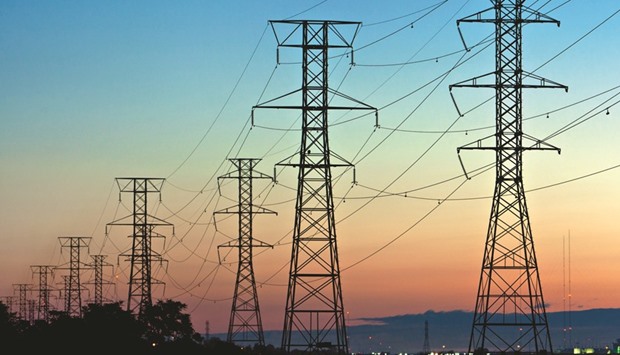The idea that giant batteries may someday revolutionise electrical grids has long enthralled clean-power advocates and environmentalists. Now it’s attracting bankers with the money to make it happen.
Lenders including Investec, Mitsubishi UFJ Financial Group and Prudential Financial are looking to finance large-scale energy-storage projects from California to Germany, marking a coming-of-age moment for the fledgling industry. The systems help utilities solve a longstanding clean-power conundrum: Managing the unpredictable output from wind and solar farms, and retaining electricity until it’s needed.
Battery costs have declined 40% since 2014 and regulators are mandating storage technology be added to the grid. That’s encouraging utilities to offer longer contracts and developers are expected build $2.5bn in systems globally this year. These trends are changing the risk profile, giving lenders confidence in batteries in much the same way that power-purchase agreements opened banks’ doors years ago for wind and solar power.
“Having big money come in is the first step to widespread deployment,” Brad Meikle, a San Francisco-based analyst for Craig-Hallum Capital Group, said in an interview. That’s a shift from many of the storage projects we’ve seen to date as expensive components and unproven revenue potential made commercial lenders leery. Developers typically have financed systems from their own balance sheets, cobbling together revenue from short-term utility contracts or wholesale electricity markets.
“We see an opportunity in the space,” Ralph Cho, Investec’s co-head of power for North America in New York, said in an interview. “We’re attempting to be a first mover.”
Storage contracts to date in the US and Canada rarely exceeded three years, said Bryan Urban, head of North American operations for the Yverdon-les-Bains, Switzerland-based storage developer Leclanche. Now utilities are signing agreements for three to seven years, and sometimes as long at 10 years, he said. And in the UK, National Grid is signing four-year contracts for storage services.
“Instead of these short uncertain revenue streams, you now have longer-term contracts that investors can get behind,” said Logan Goldie-Scot, head of energy storage analysis at Bloomberg New Energy Finance in London.
The industry still faces significant hurdles. While costs have fallen, batteries are still an expensive way to manage electricity. Developers have little data to demonstrate how their systems will perform over time. Also, existing rules for wholesale power markets were mostly written for traditional equipment that generates and delivers electricity, and the industry is still developing market mechanisms to determine how to value and pay for storage systems that offer different functions.
The market is fragmented with a variety of different technologies, including lithium-ion batteries, flow batteries and flywheels. They have different capabilities and developers offer different types of services. They can smooth the flow of power on the grid, absorbing power when there’s too much and delivering needed jolts when demand spikes.
That means the industry is still figuring out the best uses for storage systems, and banks don’t want to wind up backing the Betamax of storage. Plus, several one-time high flyers ended up filing for bankruptcy in recent years – remember A123 Systems, Xtreme Power and Beacon Power Corp – leaving lenders gun shy.
Utilities have been experimenting with energy storage for decades, and while momentum has been slow, it’s starting to take off. It took 30 years to install enough systems to add up to a gigawatt, and Sekine expects 1.7 gigawatts expected to go into service in 2017 alone. State regulators are a key driver, with California ordering utilities to install at least 1.3 gigawatts of storage by 2020, and Massachusetts on track to set its own targets by July.
A handful of lenders have already backed storage deals. Prudential helped finance two 20-megawatt systems in 2015 that Renewable Energy Systems Americas built in Chicago. CJF Capital and SUSI Partners backed a 12-megawatt portfolio of storage projects last year in Canada. More are on the horizon.
“As you get into the latter half of this year, you’ll start to see a pick-up of activity,” Ric Abel, a Prudential managing director, said in an interview.
The new crop of battery suppliers includes companies with more resources and deep pockets. Tesla, LG Chem, Samsung SDI and Panasonic Corp are giving lenders confidence that grid-scale energy storage is a bona fide industry. At the same time, the number of projects have surged around the globe, giving banks a broad choice of deals.
“We’ve had conversations with financing houses going back four or five years,” John Zahurancik, the Arlington, Virginia-based president of AES Corp’s storage division, said in an interview. “They’ve gotten comfortable with the components. Now that the deal flow is increasing, I think it is starting to attract more attention.”

Power transmission lines are suspended from electricity pylons in Kearny, New Jersey, US. The idea that giant batteries may someday revolutionise electrical grids has long enthralled clean-power advocates and environmentalists. Now it’s attracting bankers with the money to make it happen.


